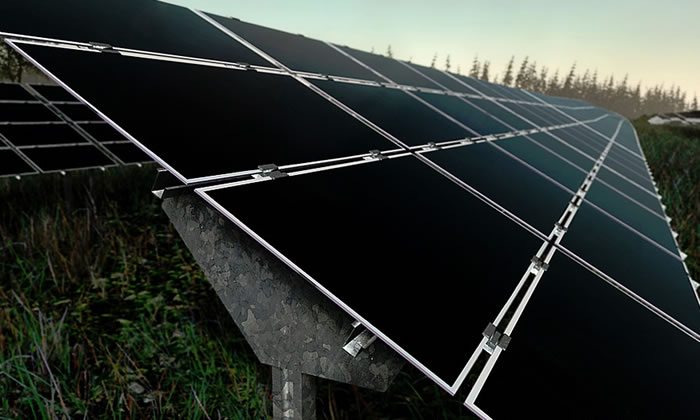De Aar solar and Droogfontein solar are two solar PV plants located in Northern Cape, South Africa.
The power plants were developed by a consortium comprising Genesis Eco-Energy, Globeleq South Africa Management Services, Mainstream Renewable Power, and Siemens. Enzani Technologies, Thebe Investment, Usizo Engineering and The Sibona Ilanga Trust were also involed.
The De Aar and Droogfontein Solar PV Plants were built and commissioned between 2011 and 2014 at a combined investment of US$96.6m. The De Aar solar sits on over 100 hectares of Emathanjeni Municipal land located 6 km outside the town of De Aar. The facility comprises 167,580 solar (PV) panels that have a nameplate capacity of 48 MW.
Droogfontein solar, on the other hand, is spread over an area of 90 hectares of land located approximately 15 km north of Kimberley. The 50 MW PV facility is made up of 168,720 photovoltaic panels.
Electricity generated by De Aar and Droogfontein solar PV plants is exported into Eskom’s distribution system under a 20-year power purchase agreement.

De Aar

Droogfontein
May 2014
US$96.6m solar power plants launched in South Africa
A conglomerate led by British company Globeleq has officially launched two solar power plants, representing a combined investment of US$96.6m in the Northern Cape.
The De Aar and Droogfontein solar photovoltaic plants, each comprising over 165, 000 photovoltaic (PV) panels spread over 100-hectare sites near De Aar and Kimberley, will together contribute 100MW of clean energy to South Africa’s national grid.
The plants were built under the government’s renewable energy program for independent power producers, which aims to add 3,725 MW of wind, solar photovoltaic, and concentrating solar power to South Africa’s energy mix.
Globeleq is the majority shareholder in the consortium that built and will run the plants, the others being Ireland-based Mainstream Renewable Power, Thebe Investment Corporation, South African engineering firms Enzani Technologies and Usizo Engineering, and local community trusts.
Under the government’s Integrated Resource Plan, about 9,400 MW of new solar capacity will be introduced into South Africa’s energy mix by 2030. About 8,400 MW is expected to be derived from solar PV power plants and about 1,200 MW from concentrated solar power (CSP) plants.
Reported On Jun 9, 2014
Globeleq completes two 100MW solar power in South Africa
Globeleq, a power generation company, has completed two 100MW photovoltaic (PV) solar power facilities in Northern Cape, South Africa.
The 50MW PV De Aar Solar Power and 50MW PV Droogfontein Solar Power have been generating clean power since their connection to the national grid.
“Infrastructure projects like these boost local economies through the delivery of clean and reliable electricity, creation of jobs, and development of skills that will increasingly be in demand as the industry grows. The projects are also an important contribution to the country’s energy mix,” Mikael Karlsson, CEO of Globeleq, said.
The company is also currently working on another solar plant in Eastern Cape. The 138MW Jeffreys Bays Wind Farm is part of the South African government’s Renewable Energy IPP Procurement Program.
“These plants are part of the first wave of private power generation to be built in the country in several decades. Solar power is truly a win-win solution that benefits the local community, the national economy, and the global environment.”Mark Pickering, MD of Globeleq South Africa, said.
Supporting Renewable Projects In South Africa
Equity firms are supporting renewable energy projects in a big way in the nation too. Private equity firm Actis, which has US$6.5bn of funds under management, owns Globeleq and favor clean energy projects. Torbjorn Caesar, the partner, and co-head of energy for Actis said the emerging markets are providing an increasingly attractive environment for energy investors as policy support continues to encourage investment in the sector, particularly in renewables.
An NPD Solar buzz’s Emerging PV Markets Report signals potential solar PV demand growth. Especially in the Middle East and Africa region.
The report adds that between 2014 and 2018, annual PV demand will nearly triple as the MEA region becomes a key market for the global industry. By 2018, annual PV demand in the region is expected to reach 4.4 GW, with an upside potential of 10 GW. PV demand from the MEA region in 2013 grew by 670 %. In comparison to 2012, when the region added approximately 140 MW, the research group says.

